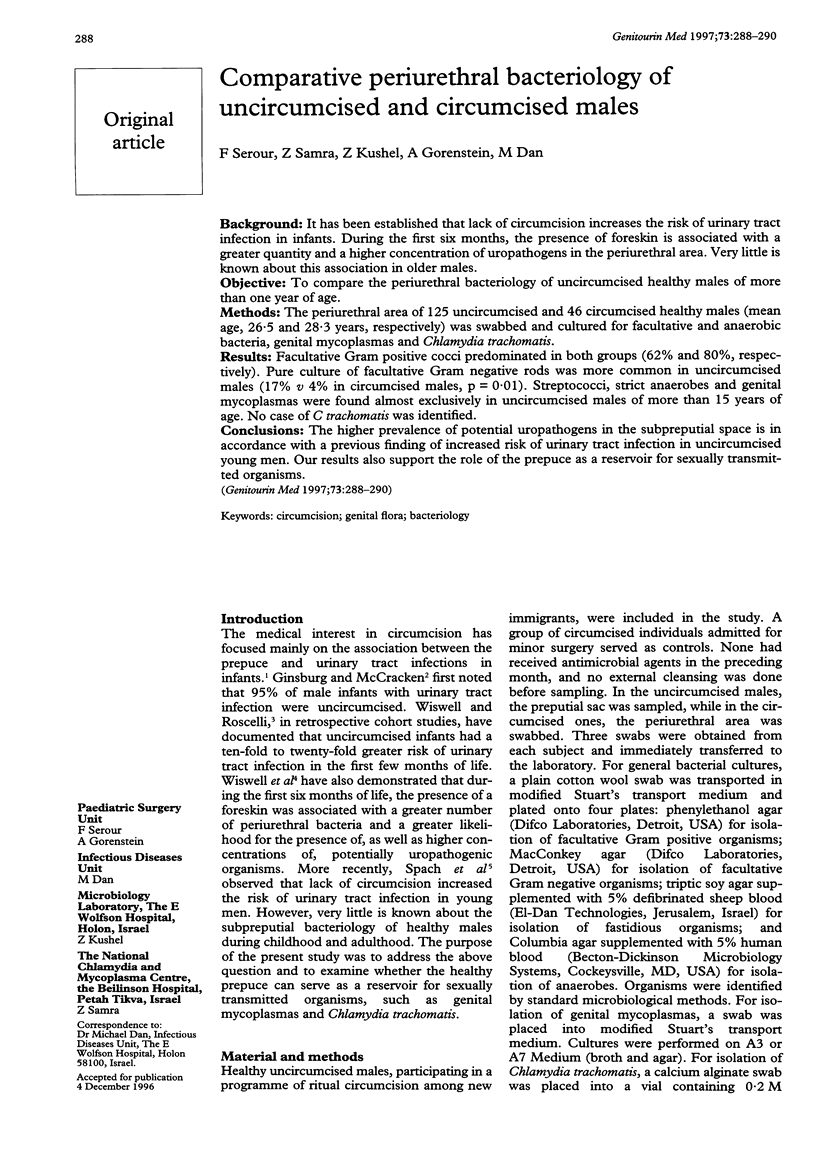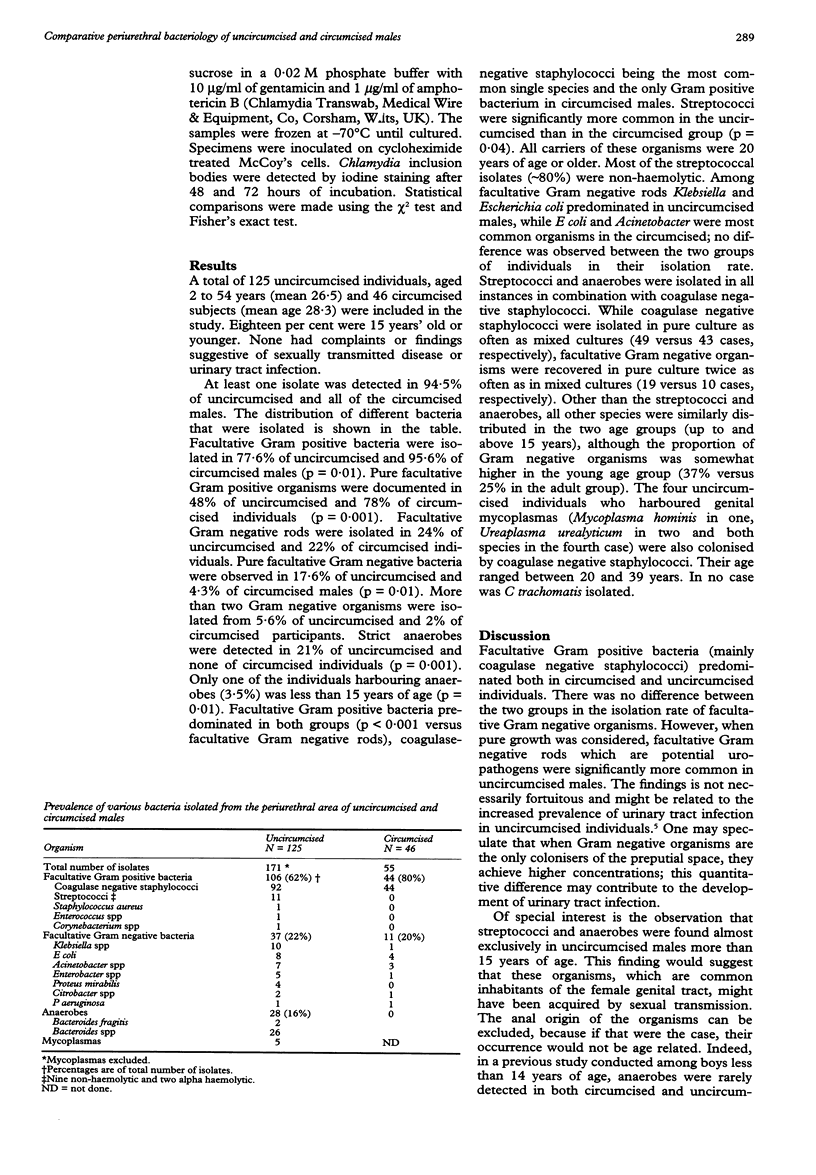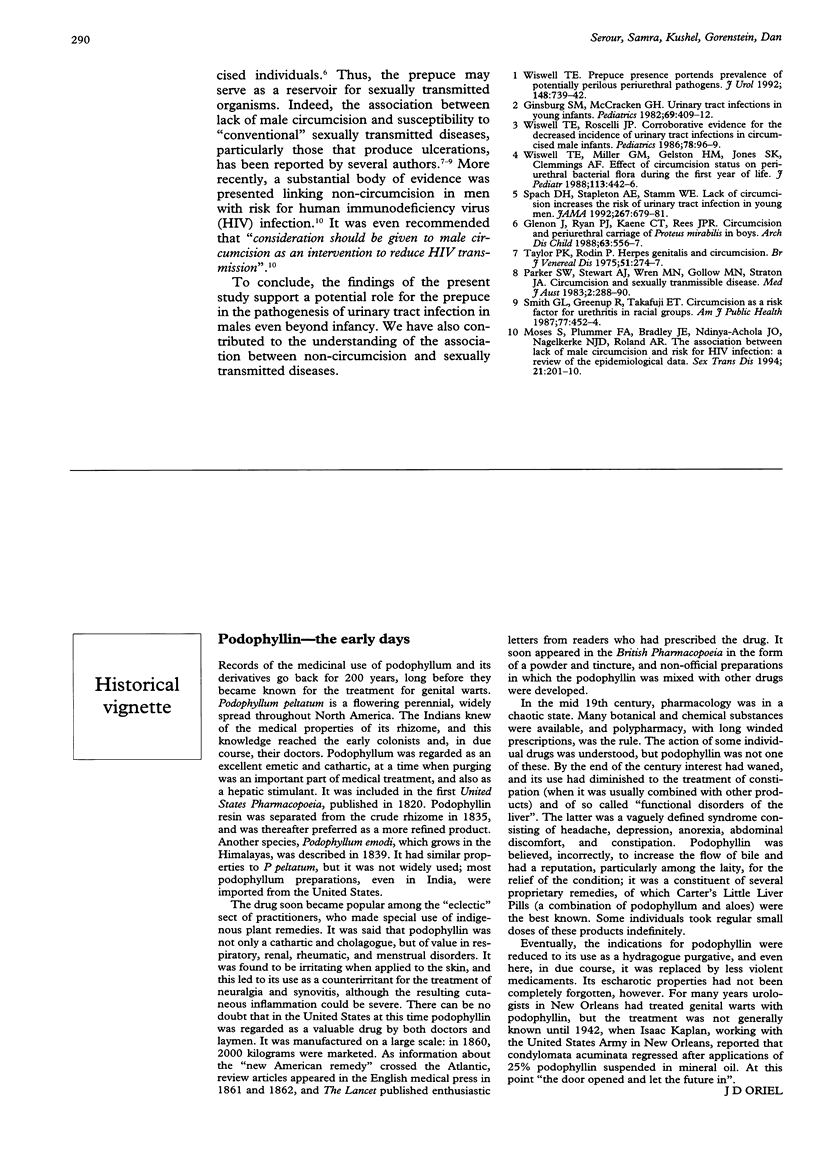Abstract
BACKGROUND: It has been established that lack of circumcision increases the risk of urinary tract infection in infants. During the first six months, the presence of foreskin is associated with a greater quantity and a higher concentration of uropathogens in the periurethral area. Very little is known about this association in older males. OBJECTIVE: To compare the periurethral bacteriology of uncircumcised healthy males of more than one year of age. METHODS: The periurethral area of 125 uncircumcised and 46 circumcised healthy males (mean age, 26.5 and 28.3 years, respectively) was swabbed and cultured for facultative and anaerobic bacteria, genital mycoplasmas and Chlamydia trachomatis. RESULTS: Facultative Gram positive cocci predominated in both groups (62% and 80%, respectively). Pure culture of facultative Gram negative rods was more common in uncircumcised males (17% v 4% in circumcised males, p = 0.01). Streptococci, strict anaerobes and genital mycoplasmas were found almost exclusively in uncircumcised males of more than 15 years of age. No case of C trachomatis was identified. CONCLUSIONS: The higher prevalence of potential uropathogens in the subpreputial space is in accordance with a previous finding of increased risk of urinary tract infection in uncircumcised young men. Our results also support the role of the prepuce as a reservoir for sexually transmitted organisms.
Full text
PDF


Selected References
These references are in PubMed. This may not be the complete list of references from this article.
- Ginsburg C. M., McCracken G. H., Jr Urinary tract infections in young infants. Pediatrics. 1982 Apr;69(4):409–412. [PubMed] [Google Scholar]
- Glennon J., Ryan P. J., Keane C. T., Rees J. P. Circumcision and periurethral carriage of Proteus mirabilis in boys. Arch Dis Child. 1988 May;63(5):556–557. doi: 10.1136/adc.63.5.556. [DOI] [PMC free article] [PubMed] [Google Scholar]
- Moses S., Plummer F. A., Bradley J. E., Ndinya-Achola J. O., Nagelkerke N. J., Ronald A. R. The association between lack of male circumcision and risk for HIV infection: a review of the epidemiological data. Sex Transm Dis. 1994 Jul-Aug;21(4):201–210. doi: 10.1097/00007435-199407000-00004. [DOI] [PubMed] [Google Scholar]
- Parker S. W., Stewart A. J., Wren M. N., Gollow M. M., Straton J. A. Circumcision and sexually transmissible disease. Med J Aust. 1983 Sep 17;2(6):288–290. doi: 10.5694/j.1326-5377.1983.tb122467.x. [DOI] [PubMed] [Google Scholar]
- Smith G. L., Greenup R., Takafuji E. T. Circumcision as a risk factor for urethritis in racial groups. Am J Public Health. 1987 Apr;77(4):452–454. doi: 10.2105/ajph.77.4.452. [DOI] [PMC free article] [PubMed] [Google Scholar]
- Spach D. H., Stapleton A. E., Stamm W. E. Lack of circumcision increases the risk of urinary tract infection in young men. JAMA. 1992 Feb 5;267(5):679–681. [PubMed] [Google Scholar]
- Taylor P. K., Rodin P. Herpes genitalis and circumcision. Br J Vener Dis. 1975 Aug;51(4):274–277. doi: 10.1136/sti.51.4.274. [DOI] [PMC free article] [PubMed] [Google Scholar]
- Wiswell T. E. John K. Lattimer Lecture. Prepuce presence portends prevalence of potentially perilous periurethral pathogens. J Urol. 1992 Aug;148(2 Pt 2):739–742. doi: 10.1016/s0022-5347(17)36708-3. [DOI] [PubMed] [Google Scholar]
- Wiswell T. E., Miller G. M., Gelston H. M., Jr, Jones S. K., Clemmings A. F. Effect of circumcision status on periurethral bacterial flora during the first year of life. J Pediatr. 1988 Sep;113(3):442–446. doi: 10.1016/s0022-3476(88)80625-5. [DOI] [PubMed] [Google Scholar]
- Wiswell T. E., Roscelli J. D. Corroborative evidence for the decreased incidence of urinary tract infections in circumcised male infants. Pediatrics. 1986 Jul;78(1):96–99. [PubMed] [Google Scholar]


